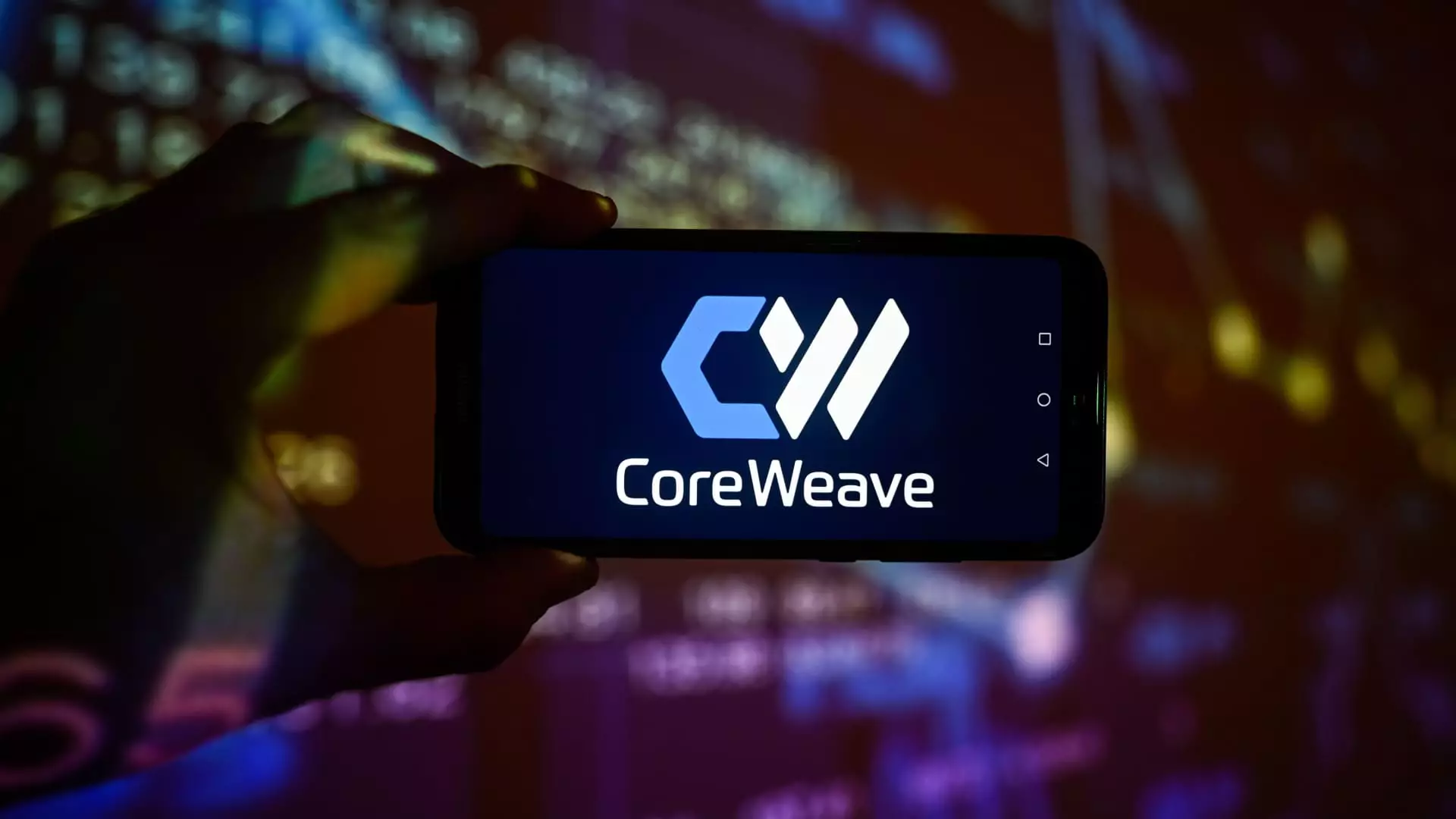In recent years, the artificial intelligence (AI) landscape has undergone transformative changes, largely driven by an increasing demand for computational power. At the heart of this evolution lies CoreWeave, an ambitious startup significantly backed by Nvidia. The company recently announced a substantial credit line of $650 million, which is aimed at bolstering its business operations and enhancing its expansive data center network. What sets CoreWeave apart is its unique business model, primarily focusing on leasing out high-performance chips to various entities, including prominent movers in the tech sector.
Financial Backing and Strategic Goals
CoreWeave’s financial trajectory has been nothing short of remarkable. Over the past year and a half, the company has successfully amassed $12.7 billion from a combination of equity and debt sources. This includes a notable $1.1 billion funding round in May, which catapulted its valuation to an impressive $19 billion. Such significant capital raises afford CoreWeave the necessary resources to expand its infrastructure. The company’s vision includes establishing 28 data centers by the end of 2024, strategically located across key markets in the U.S. and internationally, with plans for an additional 10 data centers the following year.
Their existing client roster includes heavyweight names such as Microsoft, which indicates a strong market presence and growing credibility within the AI sector. With a staggering $2 billion in revenue contracts anticipated for 2024, CoreWeave is undoubtedly positioning itself for a major role in the burgeoning AI landscape.
Market Demand for AI Infrastructure
The increasing demand for AI capabilities necessitates sophisticated hardware, specifically graphics processing units (GPUs). As it stands, training and developing AI models is an expensive endeavor, often requiring vast arrays of specialized chips—predominantly sourced from Nvidia. This ongoing trend has led numerous tech corporations to invest hundreds of millions into procuring Nvidia’s high-performance chips, underscoring the essential nature of this hardware in powering AI innovations.
The competition among tech companies to harness the potential of AI technologies is fierce, and major players are willing to spend significant sums to secure the necessary computational resources. This ultimately elevates startups like CoreWeave, which focus on renting out GPUs, as critical participants in the supply chain of AI.
Nvidia has taken a strategic approach by investing in companies like CoreWeave. This partnership is not purely financial; it also serves as a mechanism for Nvidia to ensure that its cutting-edge technology is employed in various applications across the industry. By nurturing the growth of emerging AI startups, Nvidia can further entrench its technology in the fabric of the AI ecosystem, safeguarding its market position as the go-to supplier for specialized chips.
As CoreWeave embarks on its expansion journey, Nvidia’s influence remains a significant driver of its business model. The symbiotic relationship enhances CoreWeave’s credibility in a market driven by consumer demand for innovative AI solutions.
The financial community has taken note of the AI gold rush, with significant players like Goldman Sachs, JPMorgan Chase, and Morgan Stanley leading the recent funding round for CoreWeave. As banks look to position themselves advantageously in this rapidly expanding field, there has been a marked increase in the number of credit facilities being extended to AI companies. The generative AI market, projected to surpass $1 trillion by 2032, presents lucrative opportunities, leading banks to anticipate potential initial public offerings (IPOs) in the sector.
The movement toward providing liquidity for AI firms is further exemplified by OpenAI’s recent acquisition of a $4 billion revolving line of credit—evidence of a growing trend wherein financial institutions recognize the value and potential returns in AI investments.
As CoreWeave navigates this landscape of accelerated growth, its recent initiatives indicate a strategic and well-planned trajectory. The combination of substantial financial backing, an innovative business model, and targeted industry partnerships positions CoreWeave as a significant player in the AI infrastructure sector. As demand for AI capabilities continues to soar, the potential for CoreWeave—and companies alike—to shape the future of this industry cannot be overstated. With a robust foundation and strategic vision, CoreWeave’s ascent appears not just promising but imperative for the advancement of technology in the coming years.

